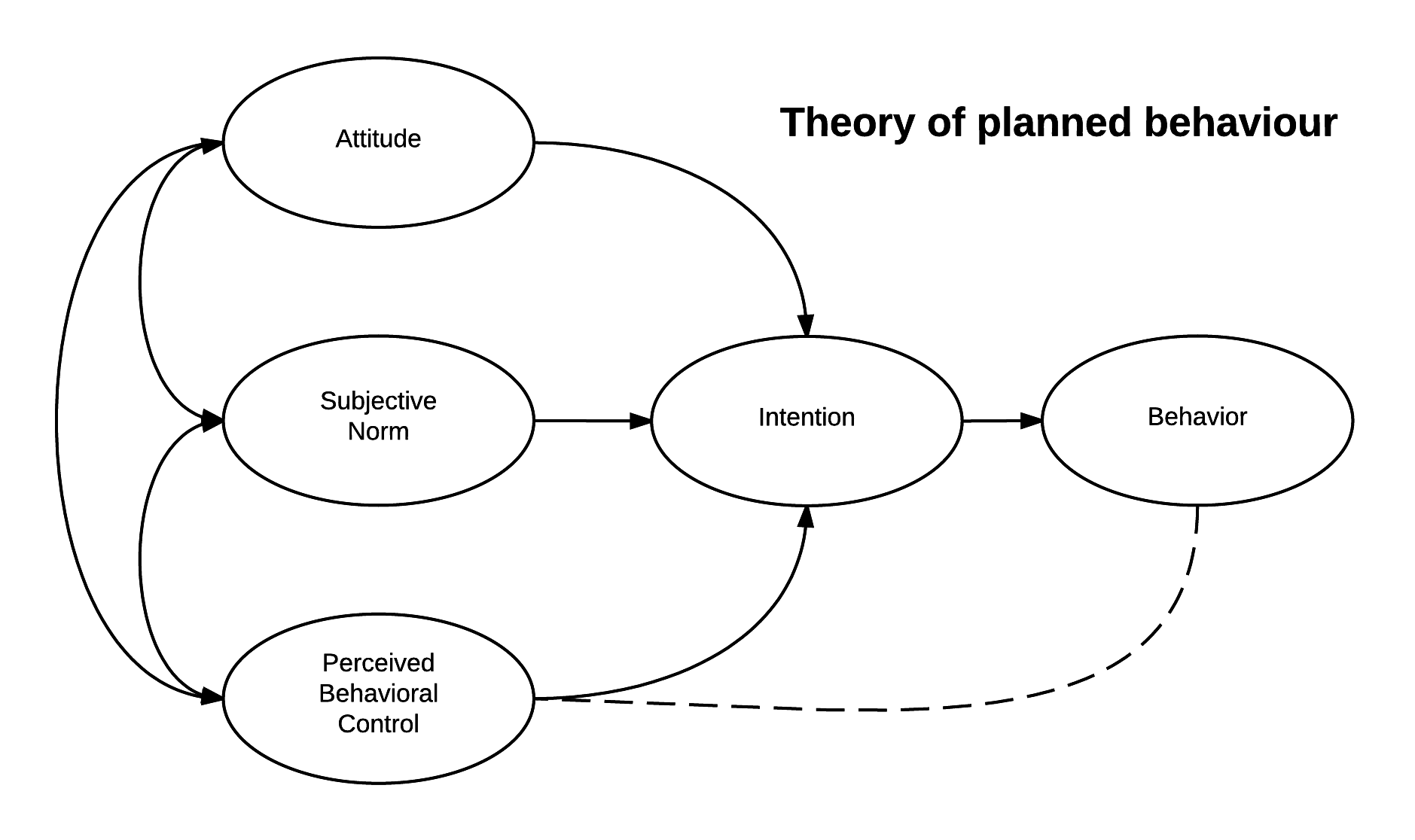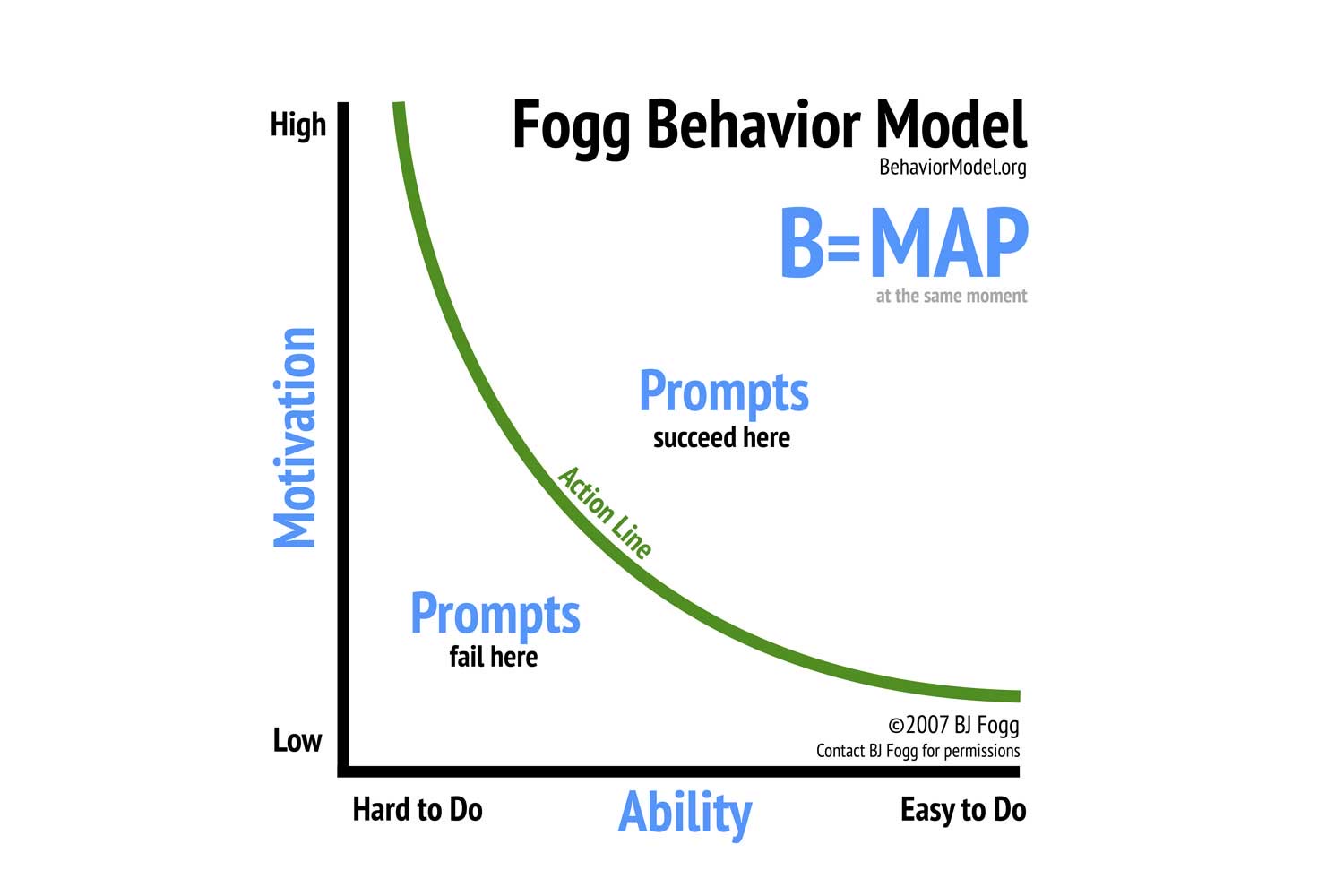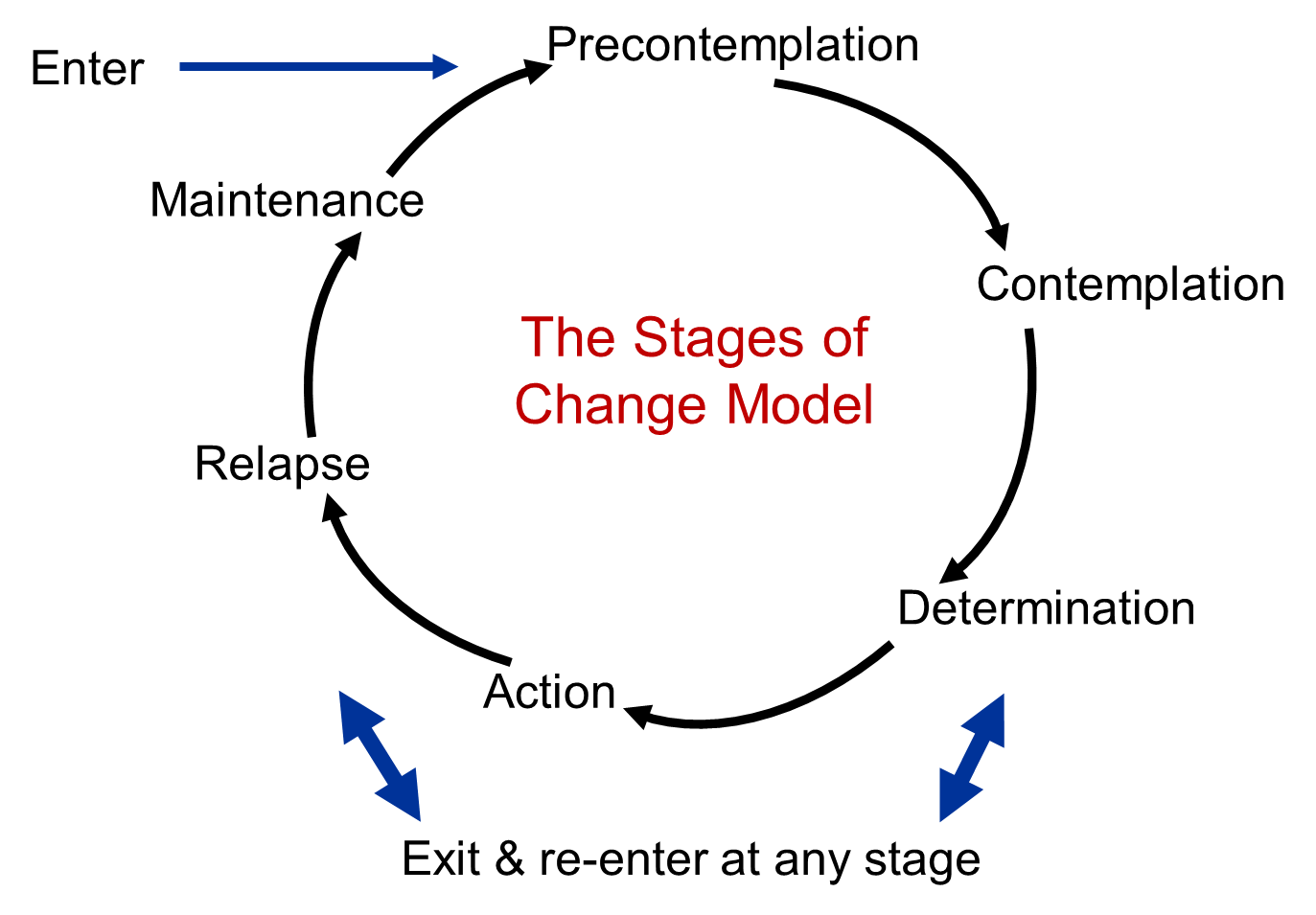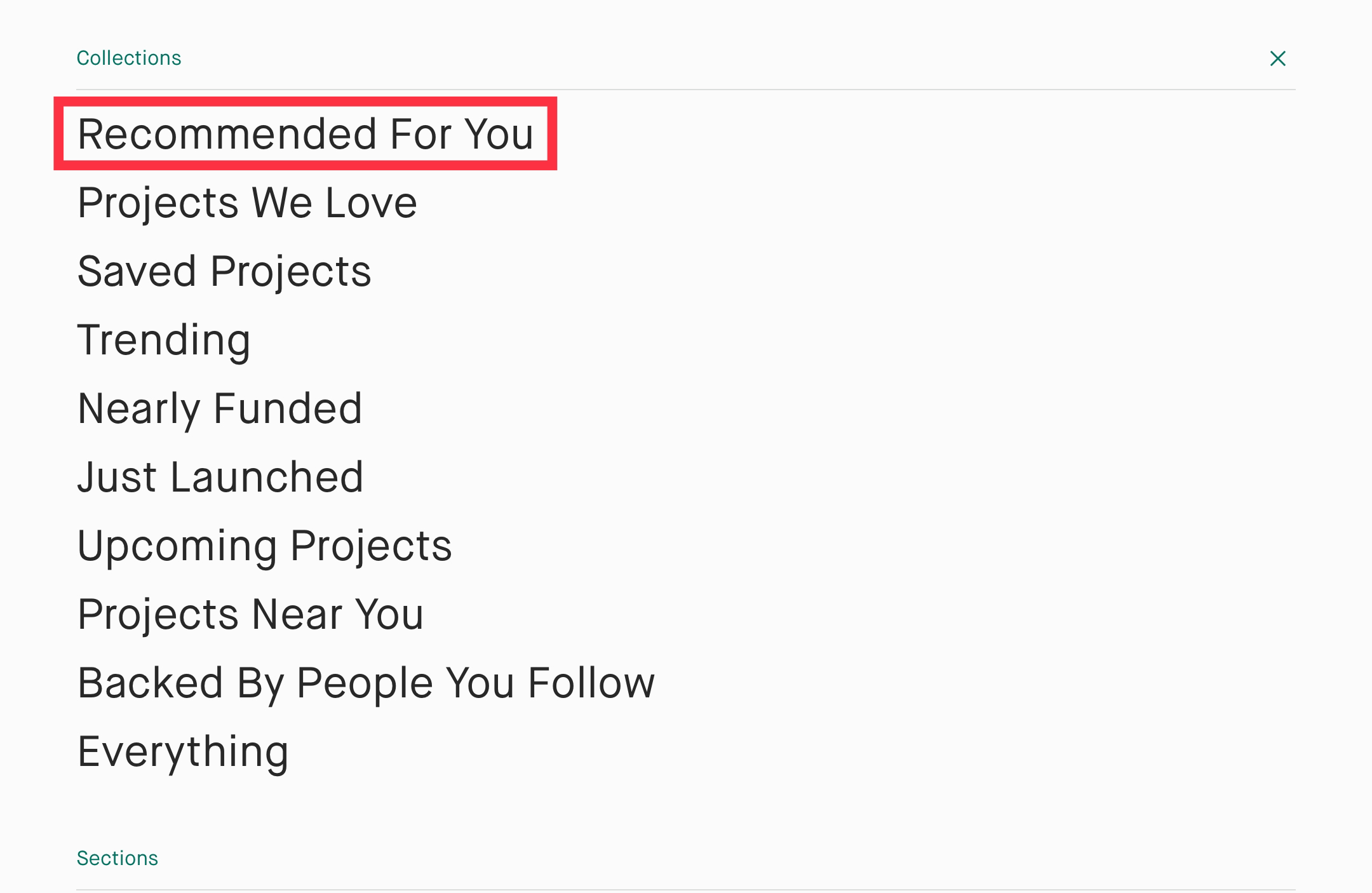
Everything you do is influenced by triggers in your environment.
You choose what to wear based on what the current fashion trends are—whether you copy what everyone else is wearing to fit in or actively make sure that you’re wearing something different. You develop hobbies based on what your friends are doing. An old study even found that a grocery store’s playlist can influence purchasing behavior.
Your environment influences your decisions, ideas, and beliefs. And triggers in your environment help you develop habits, try new things and develop new habits and behaviors.
Behavioral design—also known as design for behavior change—believes that you can influence your customers’ behaviors and preferences using design. This beginner’s guide will walk you through the basics of behavioral design, why it’s important for your business, and how to use it ethically.
What is behavioral design?
Behavioral design is a user experience (UX) design technique that understands consumer behavior to influence a change in behavior. Companies like Headspace and Noom have used behavioral design to help their customers achieve goals faster while also increasing customer retention.
While behavioral design is only beginning to take off, theories around behavior change have been around for a while.
1) The Theory of Planned Behavior

The Theory of Planned Behavior identifies three factors that affect behavior change:
- Attitude. The way that the person striving for behavior change sees the change. If you want to exercise more, for example, your attitude is how you perceive exercise—a way to get healthier (positive) or another thing to get done that requires too much effort (negative).
- Norm. What other people are doing and what they think about the change. In the sense of exercising, that means how your the people around you—family, friends, neighbors, celebrity influencers—perceive exercise and if they’re doing it, too.
- Control. How much control you have over the change. Again, using exercise as an example, there is no law that requires or bans you from exercising, so you have full control over the change. If the habit you wanted to change was drug abuse, on the other hand, you might find it easier to achieve behavioral change because the law prohibits it.
2) The Fogg Behavior Model

The Fogg Behavior Model (FBM) believes that you can only achieve behavioral change when Motivation, Ability, and Prompt all occur at the same time:
- Motivation. External factors that encourage you to do (or not do) a certain action. The FBM highlights three main motivators: sensation, anticipation, and belonging. People do things because they want to have fun, they hope to succeed, and they want to be accepted. They don’t do things because they anticipate displeasure, failure, and rejection.
- Ability. How easy or difficult—or possible or impossible—it is for someone to complete a certain action. For example, if you want your customers to attend your annual conference, don’t hold it in Antarctica. The easier it is for your customers to complete a certain task, the more likely they are to do it.
- Prompt. A trigger that continuously reminds your customers to do something. Most companies use branded jingles as Prompts because they can become omnipresent. If you hear the El Pollo Loco jingle on the radio, on your phone, and on a TV ad, you might just decide to get some chicken.
3) The Transtheoretical Model

The Transtheoretical Model is a combination of multiple theories that lists six stages to change:
- Precontemplation. At this stage, your potential customer isn’t quite ready to change. They don’t see a problem in the way they do things and still believe that change is too much of a hassle.
- Contemplation. At this stage, your potential customers now know that they have a problem that you can potentially solve. At this stage, they start considering behavior change but probably won’t take any action yet.
- Determination. Your potential customers who are at the determination stage are ready to make a purchasing decision. At this stage, they’ll probably call your sales team, make some inquiries through social media, and try to learn more about the benefits of your product.
- Action. Now your potential customers have become customers—they believe in your product and will continue to use it for the foreseeable future.
- Maintenance. Your customers are the maintenance stage are now avid users of your product, but their experience will determine whether or not they truly stay with you.
- Relapse or Termination. This last step can go either well or poorly. If your customers “relapse” that means that they didn’t find your solution all that helpful and go back to their old ways. If your customers “terminate,” that means that your solution has become the new norm.
We’ve identified three important theories that businesses and designers can use to inspire their design principles, but the Boston University Medical Campus lists out more theories in details If you want to learn more. UX designer Irina Nik also lists out more theories relevant to design.
Why is behavioral design so revolutionary?
Behavioral design is revolutionary it influences habits and behavior through subtle, non-coercive experiences. By optimizing the user experience, designers can encourage users to try out your solution, help them achieve their goals, and encourage them to become daily active users.
Take Wordle for example. Wordle rose to fame in late 2021 as the game to play. But it’s not extremely unique, neither is it super engaging. In fact, most people spend maybe five minutes on Wordle per day.
And yet, avid Wordlers play the game every single day.
Wordle successfully became a part of a over fifth of Millennials’—26%—daily routines. The game was so successful that it was recently acquired by the New York Times for over a million dollars and now has around 300,000 daily users.
Wordle was so well-received because its developer, Josh Wardle, understood his target audience’s goals, affinities, motivations, and desires and applied that data to his product.
1) Players wanted something fun but simple. Wardle made the game as simple as possible. You have six chances to guess the five-letter word of the day. If you get a letter right, it turns either green or orange. If you don’t, the letter stays gray. And that’s it. No ads, no banners, no agendas—just a game that gives five minutes of entertainment.
2) Scarcity is enticing. Wardle initially made the game for his partner, who loved playing New York Times’ Spelling Bee—a puzzle game that gave you one puzzle then left you wanting more. So he knew that scarcity sells. He then applied that concept to Wordle, which is why users can only play one puzzle per day.
3) Progress reports gave players a sense of achievement. Wardle created a scoreboard that popped up after every puzzle that showed play streak, guess distribution, win percentage, and number of puzzles played.

4) Triggers remind people to keep coming back. Wardle made Wordle shareable in December of 2021. Players copied their scoreboard results and sent those results to friends and family on a daily basis. In doing so, they reminded their peers to play Wordle while also challenging peers to get a better score.
Wardle used principles found in the theories of behavioral change to create a game that people became enamored with. He made Wordle simple and easy to use, set up triggers by making Wordle results shareable, and built the habit using scarcity and a play streak record.
6 Behavioral design techniques to improve your product
Based on the theories we’ve discussed, designers have noticed certain behavioral design patterns that work well.
1) Use the Cue-Action-Reward model
Dalton Combs and Ramsay Brown introduced the Cue-Action-Reward or CAR model in their eBook Digital Behavioral Design. The model is simple—set up triggers that remind your users to take action, then reward them for taking that action.
In the case of the application My Fitness Pal, the app tries to encourage users to count calories. When you sign up, it asks you what your daily caloric intake goal is. It then reminds you through notifications to input your calories three times a day—once per meal: breakfast, lunch, and dinner. At the end of each day, it shows you your calorie-counting streak and how successful you were at staying within your caloric intake goal.
The cue is the reminder notification. The action is inputting calories after every meal. The reward is a little celebration window.
2) Gamify your product experience
Gamifying your product experience means giving your users the illusion that they’re having fun and achieving something whenever they do something within your product.
Noom gamified weight loss with progress bars to show you how much exercise you’ve done in a day, streak records to show you how many days you’ve successfully changed your lifestyle, and so on. They even use a red-, yellow-, and green-light system to tell you which foods are good, which ones you can have sometimes, and which ones you should probably avoid.
While losing weight isn’t fun (or easy), a 2016 study found that Noom successfully helped 77.9% of over 35,000 people lose weight. Users stuck to their lifestyle changes with the help of UX that made progress visible.
3) Use positive reinforcement
Positive reinforcement happens when you give your users a “reward” after performing the action that you want them to perform. That reward can be anything from points to a simple banner that says, “You did it!”
A great example of simple yet effective positive reinforcement is how Google shows you a nice illustration after you get your email inbox to inbox zero.

4) Reduce friction
Friction is the number of steps or amount of effort it takes to achieve a certain goal. And social media sites have perfected this technique with the use of infinite scroll.
Imagine if it took five clicks on Instagram to get to the next post or video. We’d probably all use it less. But TikTok, Instagram, Facebook, Pinterest, and other social media sites have learned that if all users need to do is swipe to scroll, they’ll keep scrolling.
Reducing friction and making it as easy as possible to do a certain action will encourage users to do that action more.
5) Personalize the experience with AI
In the age of technology, personalization goes beyond adding a name to an email subject line and greeting. Personalization means curating content that users will love.
Again, social media does this with learning algorithms. The posts you see on your Pinterest feed are carefully curated by Pinterest’s algorithm based on what types of content you’ve interacted with and seem to enjoy. The same goes content sites like Medium, forums like Reddit and Quora, and ecommerce shops.
Kickstarter, for example, has a “Recommended for you” page that shows users projects that they are more likely to back based on projects they’ve clicked on or backed before.

6) Delay rewards
In the same way that positive reinforcement can help you influence your target audience’s habits, delaying rewards for a better reward can encourage habit formation.
Ecommerce shops use this technique when they offer sales on certain days. For example, Chinese eCommerce giant Taobao has small sales on January 1 (1.1), February 2 (2.2), March 3 (3.3), and so on. But they hold their biggest sale on November 11, China’s Single’s Day otherwise known as 11.11.
Because of that, every year, Chinese shoppers fill their carts with items that they plan to check out on 11.11. And without fail, every year, 11.11 sales continue to grow.
Keep your users at the heart of your design process
As a designer, you want to create an experience that your users enjoy. But more than that, you want to give your users an experience that they enjoy so much that they can’t help but use.
Behavioral design can get you there. Product design can influence your users’ habits—encourage them to drink more water, to exercise regularly, or to continuously scroll on their phones for enjoyment—or simply give them something to look forward to once a day (i.e., what Wordle did).
But beyond the different design techniques, as long as you keep your users top of mind, you’ll create a product that surprises, delights, and keeps them coming back for more.